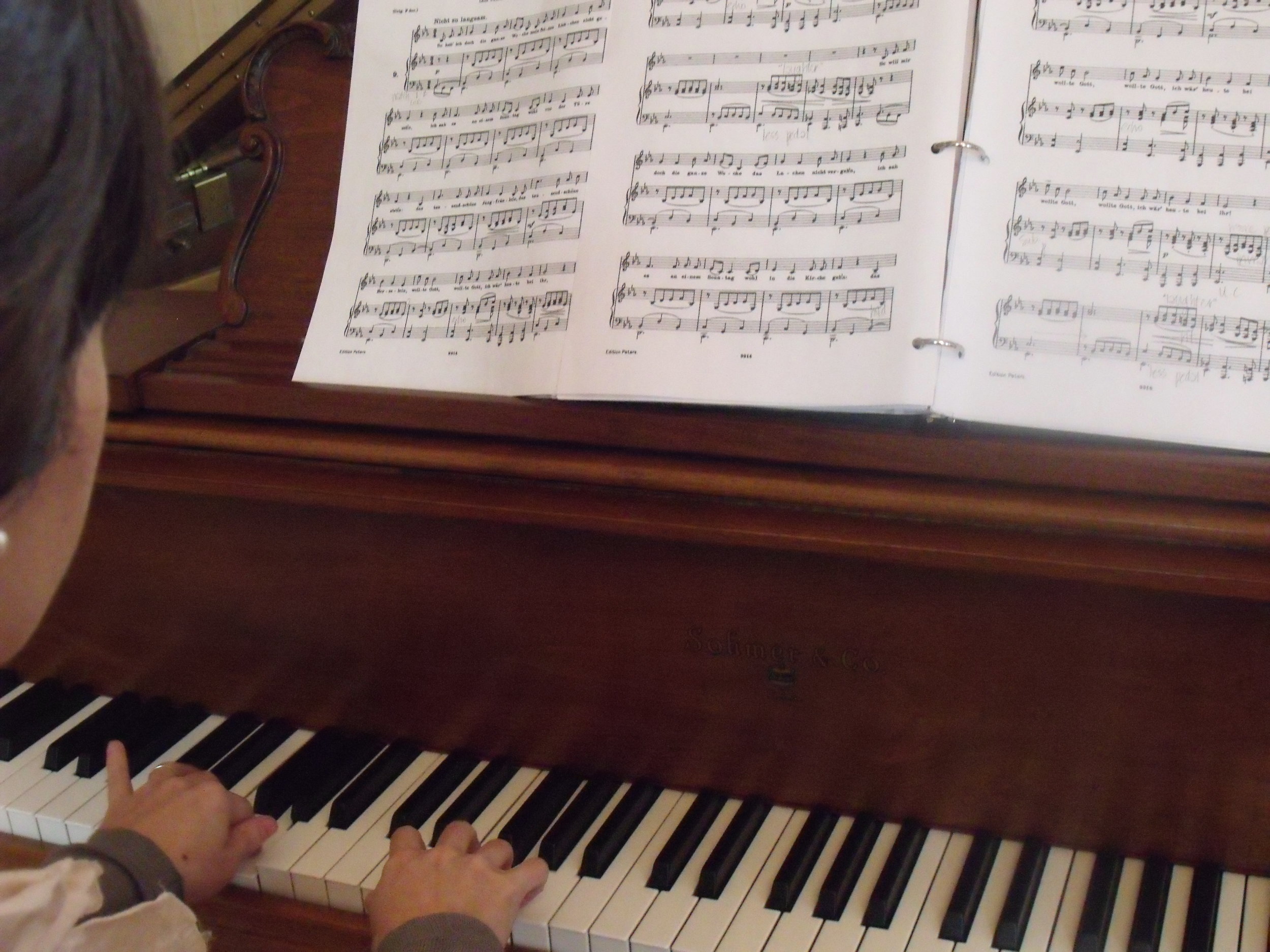Steve and I had great fun planning a presenting a short lecture recital on traditional African-American spirituals a few weeks ago. Here is a video clip and a little bit of history on the third piece on our program, “Wade in the Water.” Enjoy!
This familiar piece has two scriptural reference points. First, it tells the story of Moses parting the Red Sea and leading the Israelites safely through on dry ground. Second, in the New Testament, we read the story of the healing pool. John 5:4 says, “For an angel went down at a certain time into the pool and stirred up the water; then whoever stepped in first, after the stirring of the water, was made well of whatever disease he had.” Again, the text seems to parallel the slaves’ yearning for freedom and for healing. In fact, it has been suggested that this piece refers to the Underground Railroad. Wading through rivers meant leaving fewer tracks and not leaving a scent to be traced (Gray, 2012). The text reads:
Chorus: Wade in the water, Wade in the water, children. Wade in the water, God’s a-goin’ to trouble the water.
Verse: See that band all dress’d in white? God’s a-goin’ to trouble the water. The Leader looks like the Israelite, God’s a-goin’ to trouble the water.
Chorus
Verse: See that band all dress’d in red? God’s a-goin’ to trouble the water. It looks like the band dat Moses led. God’s a-goin’ to trouble the water.
Chorus
-- Resources: Gray, H. T. Negro spirituals still resonate. Myrtle Beach Online. Accessed Wednesday, February 29, 2012. http://www.myrtlebeachonline.com/2012/02/29/2688494/negro-spirituals-still-resonate.html.


 Some of you may remember my
Some of you may remember my 




